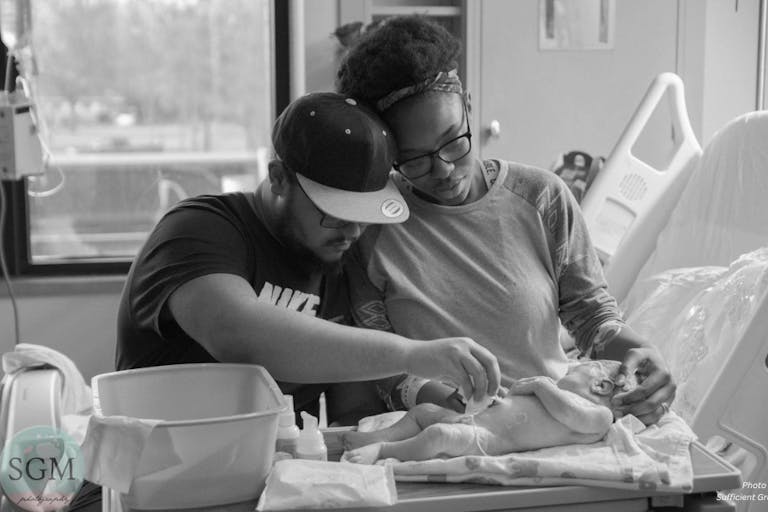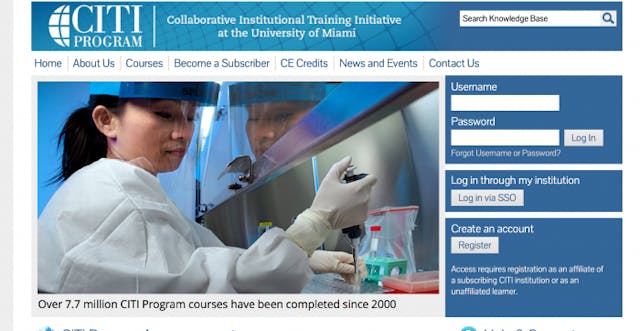
‘I’m bathing my baby:’ Perinatal hospice shows how every baby should be treated
Nancy Flanders
·
Investigative·By Catherine Livingston, PhD
Planned Parenthood likely violating federal research protocols
Planned Parenthood’s blanket “out” for all of the Center for Medical Progress’s undercover videos is that all women have given appropriate consent for this research. And very often they use a loophole to get out of having to follow national research protocols.
In the first video, Dr. Deborah Nucatola explained that they often don’t classify most of their research as such:
There’s no guidelines…. For the first few years that it happened, it was treated as research, and then we realized that this was kind of overkill because we didn’t have a particular IRB approved study, it just didn’t fit into our framework. So we just kind of backed off of it. (Transcript, page 47)
Nucatola’s statement was a red flag because it was a creative way to avoid research protocols. The inference was that their research might not be approved or would have to go through multiple revisions and submissions to gain approval, so they just found a loophole by not designating it to a certain study. This leads to ethical questions that should concern any researcher.
The United States Department of Health and Human Services (HHS) sets requirements for review boards – IRBs, also known as ethical boards – who are charged with approving research. The fifth video subject, Planned Parenthood of the Gulf Coast Texas (PPGCT), has its own IRB, but it’s subject to the same government regulations. Research with human subjects has some more complicated nuances than simply doing academic research, which is probably why Nucatola avoids it. Since pregnant women are human subjects, the consent about which Planned Parenthood talks is vital.
However, both pregnant women and fetuses, are sub-populations under federal law known as a “Special Classes of Subjects.”
CITI Training
In the latest Planned Parenthood video, Director of Research, Planned Parenthood Gulf Coast, Melissa Farrell, discusses CITI training and IRB consent and approval procedures. She says of her team of five, “some have that training” (p. 13-14), but all would be required to do so if they work with any research study.
CITI stands for Collaborative Institution Training Initiative. CITI training is a series of modules, lasting several hours, that each researcher involved in a study must undergo before even applying to do a research study. A current CITI certification only lasts two years (recently changed from one), and must be renewed by redoing the training. Medical research is carefully regulated.
Article continues below
Dear Reader,
Have you ever wanted to share the miracle of human development with little ones? Live Action is proud to present the "Baby Olivia" board book, which presents the content of Live Action's "Baby Olivia" fetal development video in a fun, new format. It's perfect for helping little minds understand the complex and beautiful process of human development in the womb.
Receive our brand new Baby Olivia board book when you give a one-time gift of $30 or more (or begin a new monthly gift of $15 or more).

The basis for federal research guidelines and the CITI training has roots in the Holocaust’s biomedical experiments, which became part of the basis for something called The Belmont Report, born from the Nuremberg trials after the Nazi’s conducted biomedical experiments, is the guideline for human subjects research. The report explains:
Scientific research has produced substantial social benefits. It has also posed some troubling ethical questions. Public attention was drawn to these questions by reported abuses of human subjects in biomedical experiments, especially during the Second World War. During the Nuremberg War Crime Trials, the Nuremberg code was drafted as a set of standards for judging physicians and scientists who had conducted biomedical experiments on concentration camp prisoners. This code became the prototype of many later codes intended to assure that research involving human subjects would be carried out in an ethical manner.
The Belmont Report is prescriptive, laying out what care researchers must take, but it’s also general enough to apply to all researchers, which is where opportunity for loopholes can arise. The report is based on three guiding principles:
1. Respect for Persons – “Respect for persons incorporates at least two ethical convictions: first, that individuals should be treated as autonomous agents, and second, that persons with diminished autonomy are entitled to protection…. In most cases of research involving human subjects, respect for persons demands that subjects enter into the research voluntarily and with adequate information.”
2. Beneficence – “Persons are treated in an ethical manner not only by respecting their decisions and protecting them from harm, but also by making efforts to secure their well-being…. The Hippocratic maxim “do no harm” has long been a fundamental principle of medical ethics. Claude Bernard extended it to the realm of research, saying that one should not injure one person regardless of the benefits that might come to others.”
3. Justice- “An injustice occurs when some benefit to which a person is entitled is denied without good reason or when some burden is imposed unduly.”
Clearly these three principles are what come into question with Planned Parenthood where doctors admit altering procedures , or they use “creative” means, as the fifth video says, to get what they need for a research study. Likewise, in the second video, the now infamous line of using a “less crunchy” abortion technique refers to Manual Vacuum Aspiration to get an intact fetus, which some say endangers women unnecessarily. In a recent article for her Archdiocesan Catholic paper this week, Vicki Evans (featured in our Fetal parts for sale series) writes:
To justify the grisly disposition of the baby, Planned Parenthood relies on an informed-consent defense. Realistically, the stack of legal documents presented to the woman for signature as she awaits surgery are frequently signed without understanding, under stress or even under duress. Consent may not always be free and informed, particularly when the consent form reads, “I agree to give my blood and/or tissue from the abortion as a gift to be used for education, research or treatment.” This would not automatically lead one to believe they were signing away the dismembered baby’s limbs, liver, heart, eyes, torso, brain.
The HHS IRB guidelines also lay out what informed consent is, in accordance with the Belmont Report guidelines, and it seems a check box to donate blood and/or tissue is likely not truly informed to these women who have trusted PPGCT with their medical care.HHS IRB Guidelines
Informed Consent, as laid out by the HHS, is defined as:
Potential recipients of such tissues, as well as research and health care participants, should be properly informed about the source of the tissues in question.
The decision and consent to abort must precede discussion of the possible use of the fetal tissue and any request for such consent that might be required for that use.
Fetal tissue from induced abortions should not be used in medical research without the prior consent of the pregnant woman. Her decision to donate fetal remains is sufficient for the use of tissue, unless the father objects (except in cases of incest or rape).
Consent should be obtained in compliance with state law and with the Uniform Anatomical Gift Act.
Additionally, while state laws govern fetal tissue research more specifically, HHS’s IRB section on research with fetuses says:
Research With Dead Fetuses, Fetal Material, and the Placenta. Research activities involving the dead fetus, macerated fetal material, or cells, tissue, or organs excised from a dead fetus are governed by state laws and regulations [45 CFR 46.210]. The National Commission recommended that, in addition to conforming to such laws, research involving dead fetuses be compatible with commonly held views about respect for the dead.
It seems clear from the words of these doctors on the videos that pregnant women, already classified by federal research guidelines as a vulnerable population, are not receiving ethical care. The atrocities of the Holocaust were used as a basis for establishing research guidelines so we would not see repeats on unethical human experimentation. But Farrell of PPGCT would say they must be creative because those who govern academic research just don’t understand. She explains why she avoids the academic side:
A disconnect. What we do in an academia bubble, and then what we do in a corporate world, in a clinical world, it’s very corporate. Just because this works in academia doesn’t necessarily mean it works in or can be reproduced anywhere else. (Transcript, page 53)
The problem with that statement is that just because research is privately funded doesn’t mean it should not follow ethical protocols. She uses a loophole, like Nucatola does. The problem is that they still do some academic research, and the way they define research may be disingenuous as well. Where the line falls is hard to tell thus far, but these are questions that need to be answered from the multiple investigations.
Live Action News is pro-life news and commentary from a pro-life perspective.
Contact editor@liveaction.org for questions, corrections, or if you are seeking permission to reprint any Live Action News content.
Guest Articles: To submit a guest article to Live Action News, email editor@liveaction.org with an attached Word document of 800-1000 words. Please also attach any photos relevant to your submission if applicable. If your submission is accepted for publication, you will be notified within three weeks. Guest articles are not compensated (see our Open License Agreement). Thank you for your interest in Live Action News!

Nancy Flanders
·
Investigative
Carole Novielli
·
Investigative
Nancy Flanders
·
Investigative
Nancy Flanders
·
Investigative
Carole Novielli
·
Investigative
Carole Novielli
·
Human Interest
Catherine Livingston, PhD
·
International
Catherine Livingston, PhD
·
Newsbreak
Catherine Livingston, PhD
·
Human Interest
Catherine Livingston, PhD
·
Human Interest
Catherine Livingston, PhD
·